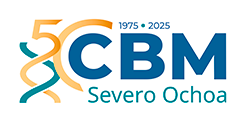Scientific Program
Tissue and organ homeostasis
RESEARCH GROUP
Cell polarity
Our goal is to unravel the molecular mechanisms behind certain diseases by investigating three subjects of biomedical relevance associated with polarized transport and cell polarity:
1. The formin INF2.
2. MAL family proteins.
3. The primary cilium.
Through these studies, which are based on the use of in vitro cell models and advanced molecular and cell biology methodologies, we hope to contribute to the development of strategies aimed at impeding disease progression.
Research
Formins are a family of proteins crucial for the formation of linear actin polymers. While most formins, like mDia1, are regulated by Rho GTPases, INF2 stands out as it is uniquely regulated by Ca2+/calmodulin interaction with its N-terminal extension. INF2 plays a pivotal role in controlling microtubule modifications implicated in degenerative diseases and cancer. Mutations in INF2 lead to specific degenerative hereditary diseases affecting the kidney (focal and segmental glomerulosclerosis) and peripheral nerves (Charcot-Marie-Tooth disease). Investigating the molecular mechanisms behind pathogenic INF2-induced cell degeneration is a current focus of our research.
The MAL family of integral membrane proteins includes seven highly hydrophobic members. A characteristic of these proteins is their presence in condensed membrane subdomains or rafts associated with specialized membrane traffic and cell signaling pathways. Specifically, we found three MAL family members (MAL, MAL2, and MYADM) playing vital roles in these processes. Analyzing large-scale genomic datasets, we’ve identified strong correlations between the expression levels of MAL-family members and prognosis in diverse types of cancer, including those affecting the breast, kidney, lung, pancreas, and endometrium.
The primary cilium, which is a non-motile appendage of the plasma membrane, orchestrates crucial signaling pathways related to cell proliferation, differentiation, survival, and migration. Dysfunctions in the primary cilium are linked to various human developmental and degenerative disorders, which are collectively known as ciliopathies. Our group has discovered the role of the midbody remnant (MBR) in promoting primary cilium biogenesis. This role involves a physical connection between the midbody remnant and the plasma membrane, which allow the transfer of specialized membranes from the MBR to be used by the centrosome for the assembly of the ciliary membrane. Our work establishes a tripartite link between the three major microtubule-based organelles —the centrosome, the MBR and the primary cilium. This novel insight enhances our understanding of the process of primary ciliogenesis and, hopefully, will contribute to explaining the ciliary defects in some ciliopathies.
Group members

Isabel Correas Hornero
Lab.: 324 Ext.: 4616
icorreas(at)cbm.csic.es

Miguel Ángel Alonso Lebrero
Lab.: 324 Ext.: 4614
maalonso(at)cbm.csic.es

Laura Fernández Martín
Lab.: 324 Ext.: 4644/45
lfernandez(at)cbm.csic.es
Selected publications
The MAL Family of Proteins: Normal Function, Expression in Cancer, and Potential Use as Cancer Biomarkers
Leticia Labat-de-Hoz et al.
Structure and function of the N-terminal extension of the formin INF2
Leticia Labat-de-Hoz et al.
Adaptive Lipid Immiscibility and Membrane Remodeling Are Active Functional Determinants of Primary Ciliogenesis
Miguel Bernabé-Rubio et al.
Midbody Remnant Inheritance Is Regulated by the ESCRT Subunit CHMP4C
Javier Casares-Arias et al.




